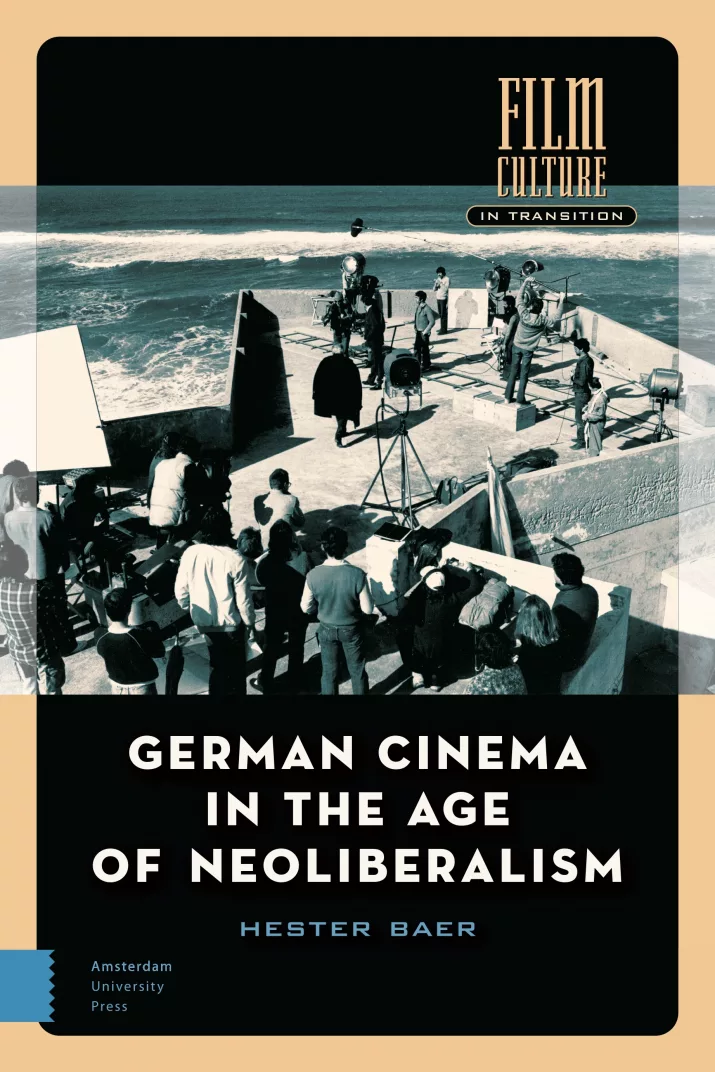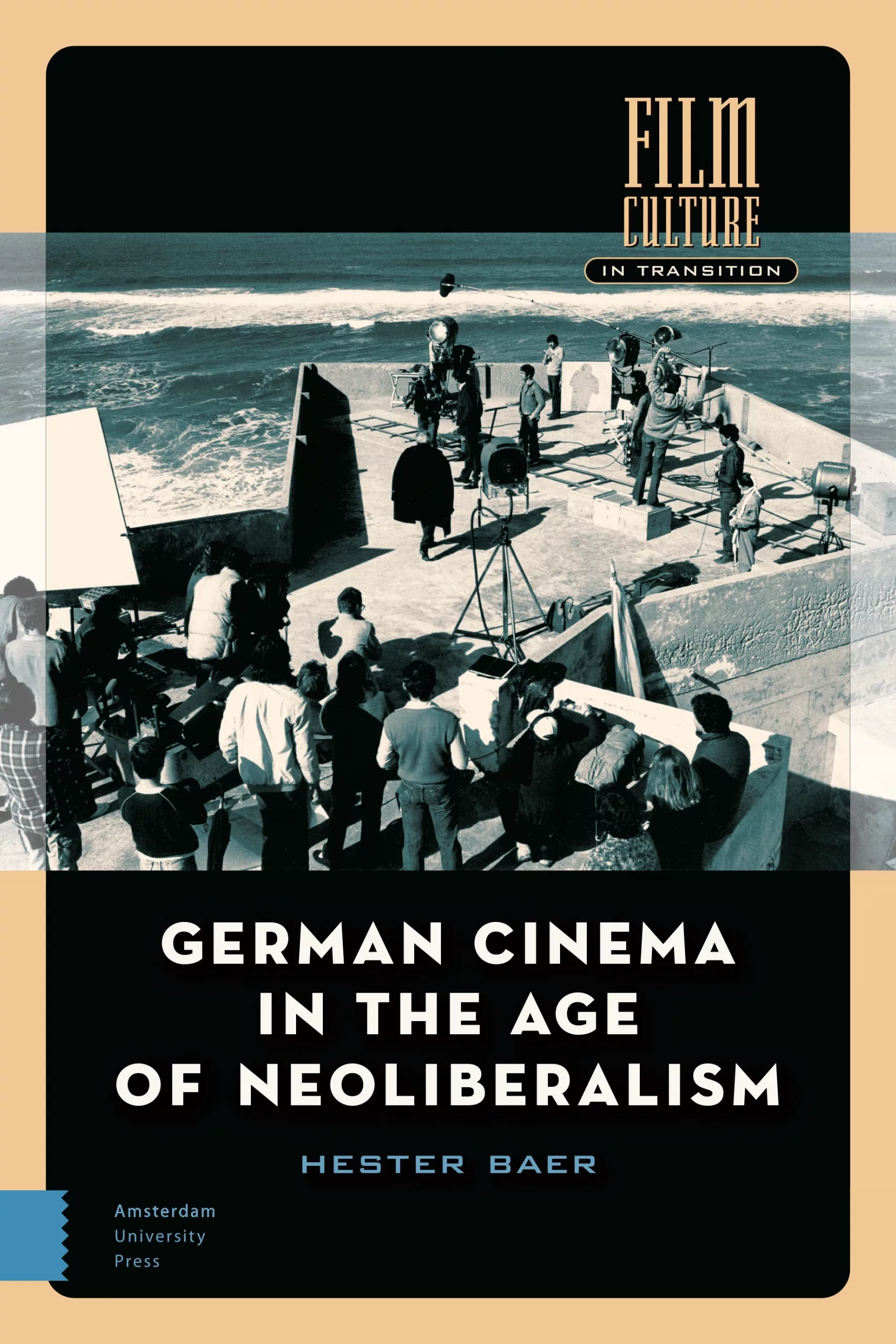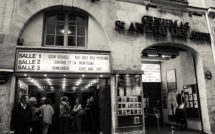

This is part of our special feature on European Culture and the Moving Image.
As sites of neoliberal formation, German’s national cinemas contain complex negotiations between societal and creative forces. In German Cinema in the Age of Neoliberalism, Baer moves across four decades of film and the acceleration of neoliberalism to demonstrate how these forces operate together, whether in reinforcement, opposition, or in ambiguous spaces in between. The films within the purview of the book help make visible the shifts and consequences of the otherwise discreet neoliberal turn, argues Baer, and her boldly non-linear approach that jumps between periods and styles within West, East, and post-unification Germany further clarifies a mapping of aesthetic, cultural, and political history. Whether the work of an independent filmmaker or that of a studio hack, these films bare the markings of neoliberalism, permeating the content of their stories, their styles, their modes of production, and their motivations.
Rather than selecting the fall of the Berlin Wall in 1989 as a typical demarcation, Baer argues that the tipping point at which neoliberalism accelerated in Germany began much earlier when the toll of the economic downturn in the 1970s led to parallel developments in both West and East Germany. The collapse of the GDR (German Democratic Republic) pushed things further in this direction, but Baer establishes that the dominos had already been falling. For some time, in both Germanies, culture had taken precedence over money. The state-funded DEFA (the state-owned film studio of the GDR) had long supported artistic film production in East Germany but faced increasing financial pressures and shifted its focus to the market considerations of Wirtschaftlichkeit (economic efficiency). Likewise, in West Germany, an overhaul of the federal film policy signaled an end to the artistically flourishing New German Cinema established by the likes of Rainer Werner Fassbinder, Margarethe von Trotta, and Wim Wenders, among others. Commercial viability became the priority and auteur filmmakers were all but cut off from the subsidized funding on which they had depended. What emerged was a Produzentenkino (producer’s cinema) built on mandated economic criteria that sent directors like Wenders looking for alternative sources of funding from private investors. Wenders’s The State of Things (1982) serves as an ideal example for Baer as it demonstrates one such alternative while also portraying the tenuous nature of international financing in the realm of independent cinema. The film captures the transnationalization of production with its reflexive story of a German director whose shoot comes to a screeching halt when he runs out of film after an American producer withdraws his money.
The films made within the system, however, are equally instructive for Baer. While much of the book pays close attention to films of aesthetic merit that explore or challenge their neoliberal present, it also scrutinizes those which make neoliberalism visible by way of reinforcement. At a time when countries like France doubled down on their national cinema, Germany was open for business. Foreign films, particularly those from Hollywood, flooded their cinemas, and their own output deliberately appealed for success outside their borders. Three such films are Das Boot (Wolfgang Petersen, 1981), Run Lola Run (Tom Tykwer, 1998), and The Lives of Others (Florian Henckel von Donnersmarck, 2006), all of which exemplify capitalistic projects that are designed to appeal (and sell) to a global audience.
Whereas Wenders’ The State of Things foregrounds this dynamic via a critical lens, these films ingeniously utilize modern film technique to pass off as Autorenfilme (auteur films) in service of their international profitability. This is a duality that Baer sees as synonymous with the neoliberal slip and its insidious ways of co-opting notions of individualism and progress to lull the population into a false sense of security. Das Boot and The Lives of Others—the latter of which was co-financed by Disney’s Buena Vista International—manipulate and normalize German history in order to affirm the present and pave a way to a continued neoliberal future. Run Lola Run, in which the plot is replayed three times with differing results—subverts narrative convention and portrays a would-be feminist heroine only to affirm normativity with its closing gestures. Often heralded by North American critics and audiences, these films blur lines of distinction, operating as objects of global capital that disguise themselves as works of art.
The purposes of art and cinema in shift from the social to the economic in a globalized free market society. So too do the lifestyles of everyday people: Bear identifies a synchronicity in the shift of relationships to personal lives and careers amidst the dissolution of family, intimacy, mobility and difference. Each are merely mirages as the state leaves the individual to flounder for themselves. Lauren Berlant’s Cruel Optimism, about the illusion of self-optimization, is drawn on throughout the book and helps describe both the ways in which characters throughout German cinema are sucked in by the false promises of security, intimacy, and equality, as well as how some of the films themselves take part in the creation of these illusions through narrativization.
In order to track these changes, Baer draws connections between films from before and after unification. For example, Solo Sunny (Konrad Wolf, 1980), a DEFA film made at the very dawn of neoliberalism, depicts a disillusioned outsider’s inability to find support, community, and personal freedom in East Germany. Another Frauenfilm (woman’s film) made 25 years later, Summer in Berlin (Andreas Dresen, 2005), is a comedy-drama about two women facing the more advanced consequences of neoliberalism, let down by the dwindled welfare state and burdened by a society in which family structures have dissolved yet still asks them to perform oppressive gendered roles. Part of a lineage of genre centered on the reality facing women on the lower rungs of the social ladder, the two films illuminate the particular challenges of their moment. They also effectively trace a lineage of ideological consequence, capturing different points throughout an arc of neoliberalization in which increased individual responsibility and decreased social support creates attachments to false senses of empowerment and emancipation. Likewise, Baer devotes a chapter to films that demonstrate how minorities also shoulder a disproportionate burden. For example, Turkish-German filmmaker Fatih Akin’s border-transcending ensemble drama The Edge of Heaven (2007) illustrates how their aspirational attachments to mobility and agency are meticulously controlled and limited.
Where Baer finds a contemporary counter-cinema is in the Berlin School, a twenty-first century movement constituted by filmmakers such as Thomas Arslan, Angela Schanelec, and Christian Petzold. The latter in particular figures prominently in the book through close readings of his films Yella (2007) and Jerichow (2008). Key for Baer is how these films not only image the neoliberal present but work within it through their transnational modes of production. Directors working during the heyday of German art cinema enjoyed access to subsidized funding. Not so for this new generation of filmmakers who must fund their films through combinations of international co-production, private investment, film boards, distribution and television deals. Even when they succeed in achieving such funding, they work with modest budgets and small audience potential, oftentimes depending on their exposure at film festivals. The Berlin School films are characterized by “affectless” approaches that deploy long, static takes and unusual pacing, drawing on the allure of genre in order to attract audiences only to defy expectations, replacing familiar narrativization and style with ambivalent arthouse formalism. According to Baer, this disorganizing of film logic helps to expose the workings of neoliberalism—something akin to Fredric Jameson’s cognitive mapping or Mark Fisher’s notion of how uncovering or imaging the Real that boils underneath the neoliberal façade may be a way to disrupt the ways capitalist realism can obstruct our imaginary. Berlin School films straddle between high and low art and embed themselves in the reality of their present but in an effort to uncover and critique. Petzold’s Jerichow, for instance, models its story after The Postman Always Rings Twice but reconfigured through a tale of immigration, nationhood, and alienation. Each of the characters of its central love triangle are connected by their oppressive relationships to labor, debt, and identity. Such thematic focuses are typical in the work of Berlin School films, and bring invaluable light to the realities of life in the late Neoliberal age while also reflecting its consequences in the very way they are made.
It is this synthesis of cultural and textual analysis that gives German Cinema in the Age of Neoliberalism its heft, never reducing the films in its scope to purely personal creations of their makers nor as automated cultural products, but as ambiguous texts and commercial objects that are always revealing, whether deliberately or inadvertently, evidence of a perpetually shifting social and economic landscape. The industry itself is given as much attention as the individual films and Baer makes sure to establish that they are always working in tandem. Locating this embodiment of the neoliberal turn throughout the 1980s to the present day, Baer takes a complex intersection of politics and culture and renders a convincing and comprehensive history.
Adam Cook is a film critic, curator, and scholar based in Toronto where he is a graduate student at York University. His writing has been published in Cinema Scope, Cineaste, Film Comment, Sight & Sound, Filmmaker Magazine, The New York Times, and The Globe and Mail, among other outlets. Much of his current work can be found at his Substack journal, Long Voyage Home (https://longvoyage.substack.com/).
German Cinema in the Age of Neoliberalism
By Hester Baer
Publisher: Amsterdam University Press
Hardcover / 320 pages / 2021
ISBN: 9463727337




